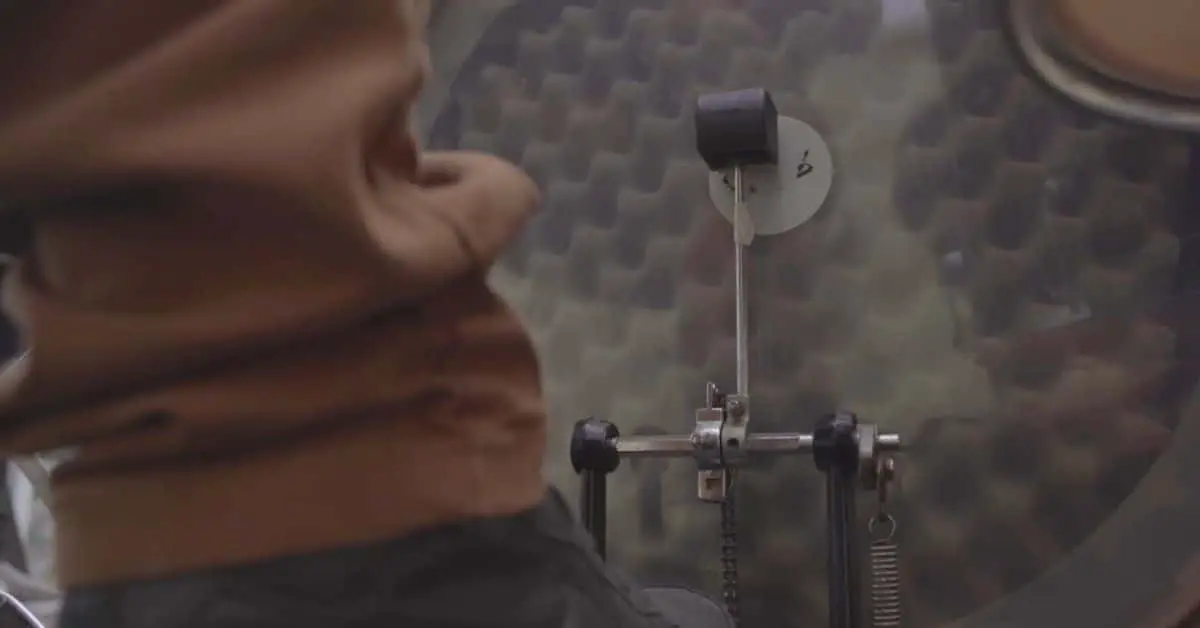A bass drum pedal is an integral part of the drummer’s setup. It is used in striking the bass drum, which is the biggest drum in a kit. Bass drum pedals affect the sound and style of the drummer. For instance, a beater influences the resonance of a bass drum.
Pedals are divided into three parts, namely footplate, beater arm, and beater head. A chain connects the beater drum to a footplate. Having a great-sounding bass drum is satisfying. A pedal must be up to the task if you want to produce playable sounds.
For a long time now, we have ignored the bass drum pedals. Most bass drum pedals have a similar design, although the models differ. Some features on certain models have a huge difference in feel, even though others are relatively subtle. Read on to learn about various settings and how to fine-tune them for a better sound.
How To Adjust Bass Drum Pedal
There are numerous styles of bass drum pedals, and all of them have distinct characteristics. The sound of a drum is affected significantly by the size and shape of the bass drum. Having a large head produces more volume from the bass drum pedal adjustment. Flatter surfaces may bring out more attacks even though not many surfaces are flat.
To adjust the bass drum pedals, you will need a carpet and pedal lubricant. You should set the throne height of the drum so that your thighs are sitting at the right angles to your shins when in a relaxed position.
Spin the seat to do this. Once you have the throne at the right height, the pedal adjustments align themselves more accurately.
How To Fix A Bass Drum Pedal
Replacing The Beater Head
As mentioned earlier, the weight and the texture of a beater head affect the quality of sound. Therefore, you should replace it if necessary. If you have a lightweight, traditional beater like the ones used for military bass drums, you will notice that they have a much more dampened sound.
Heavy wood and plastic give better presence as well as dynamic range to the sound of the bass drum. We recommend replacing the beater head by unscrewing the thin end of a beater from the top clamp near the footplate. Then you can insert your new beater and tighten the clamp.
Adjusting the motion range of the beater
The motion range of the beater should also be adjusted. Usually, the beater only moves forward until it touches the bass drum. After striking a drum, a beater’s distance is different and is only based on a person’s personal preference.
A beater that rocks further back gives the drummer more potential to put it into a beat. However, if the beater strikes a further distance, it can hit the shin of the drummer. Keeping time accurately also becomes challenging when the beater is rocking back excessively.
The beater’s motion range should suit the drummer’s playing style and set, adjusting its sitting angle accordingly. After taking the foot off the pedal, the beater will fall back to that position. The clamps attaching the rocker arm to the pedal frame should be loosened and only tightened after the beater sinks to its desired angle.
Adjusting The Pedal Tension
The pedal has a spring connecting it to the beater, and on every side, there is a finger screw. Adjusting the screws increases or relaxes the spring’s tension, hence altering the pedal’s tension.
The pedal tension shows the amount of foot pressure needed in propelling the beater to the drum. Limiting the amount of power in the drummer’s kicks requires them to set a higher tension. If the goal is hitting it hard with less effort, you must set it loose.
Mounting the pedal on the carpet
Many drummers prefer placing the drum kit on a carper to avoid slipping around the drum set. The overall angle of the pedal can be slightly adjusted by placing a different piece of rug under the pedal. Nonetheless, this should also be a matter of preference.
How Does A Double Bass Pedal Work
If you are using a double bass drum, I recommend you take a few steps and adjustments to be comfortable while using it. A double bass pedal works like a regular bass drum pedal where you adjust it to your liking after setting it up. The only difference is that a second base plate is attached by a rod to a separate beater mechanism, which operates alongside the primary beater. You will require both feet to operate double pedals.
How To Set Up Double Bass Pedal
To get your second bass drum attached, insert the right side of your driveshaft, assemble in the short extension on the left end of your main pedal and tighten your key bolts. Ensure that the pedal plays in position by moving the cam and inserting the left end of your driveshaft assemble in the right end short extension while tightening the key bolts.
If you want to adjust the driveshaft length, you should loosen the key bolts and push or pull to the size you want, then tighten them appropriately. After connecting the second pedal, make adjustments to the beater angle and spring tension.
Keep in mind that both beaters’ angles should line up as you adjust the second pedal. The tension should also be relatively the same, so you get the same feel and attack from the two pedals.

